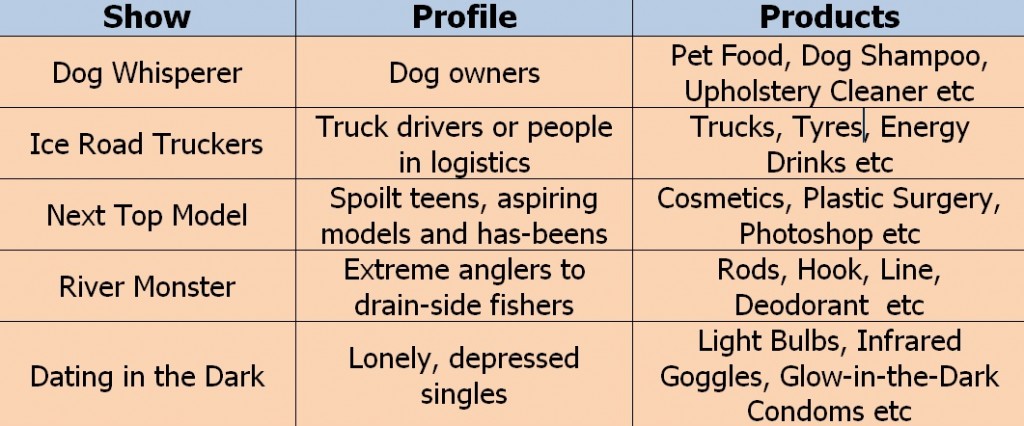This happens to me often: I’d surf through all the channels on my TV and go “There’s nothing to watch!”. And I bet it happens to you as well.
The invasion of totally weird to just plain silly reality TV shows has been swift, but far from over. It all started rather innocently with a show called Survivor, which was quite original and revolutionary at that time.
Then all hell broke loose.

Fast forward 10 years or so and there are more reality TV shows than any other kind of programming. Everything from people living in swamps to people driving trucks on ice roads is available for your viewing pleasure.
And we’re possibly only getting less than half of what they have in the US. Thank god!
The thing about reality shows – and why they’re so popular – is that they’re cheaper to produce than regular shows. No need for networks to employ writers, actors, costume designers, music directors or even a director at times.
But cheaper production costs aside, the other reason is actually advertising; or niche advertising as a matter of fact.
You see, TV used to be a mass media. Brands just clamour to advertise on primetime to reach as many eyes as possible.
Then came the internet, which allows for pin-point targeting. Something no other media can offer. So what do TV networks do? They fight back!
Their first move is to create programmes for almost every conceivable niche on the planet, then build viewership and finally get brands to advertise within that niche. Here are few general examples:
Well, in any case, the good news is that TV now allows for some degree of targeting. The bad news however, is that crappy programmes are here to stay


